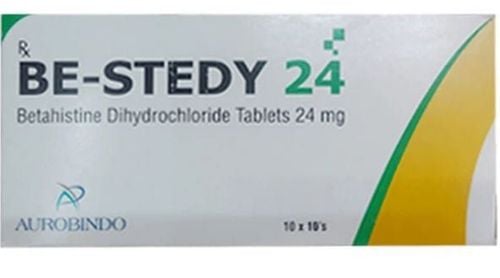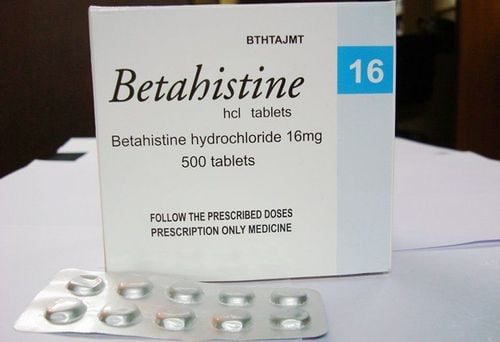This is an automatically translated article.
What is Spasticon? Spasticon is a combination drug, used in the treatment of brain diseases related to lack of oxygen supply to the brain. The drug also helped improve memory in some subjects. Let's learn about the ingredients and uses of the drug through the article below.
1. Uses of spasticon
Spasticon has the main ingredients Piracetam 400mg and Cinnarizine 25mg, which is made in the form of film-coated tablets. Spasticon is indicated for use in the following cases:
Brain disease due to trauma. Encephalopathy due to physical damage to the brain or causes related to psychological factors causing memory and cognitive function disorders or emotional disturbances. Labyrinth disease: Causes symptoms such as dizziness, tinnitus, nausea, vomiting, nystagmus. Meniere's syndrome: is a syndrome caused by abnormal fluid accumulation in the ear with manifestations such as dizziness, tinnitus, hearing loss... Prevention and treatment of migraine. Improve cognitive processes in children with mental retardation. Spasticon is not indicated in the following cases:
Patients are sensitive to any ingredient of the drug. Severe kidney failure. Hemorrhagic stroke. Porphyrin metabolism disorder. Huntington's disease, liver failure patient. Do not use this medicine for pregnant and lactating women.
2. Dosage and how to use Spasticon
The drug is taken orally, it can be taken on an empty stomach or on an empty stomach. Doctors usually do not prescribe drugs for patients to take more than 3 months, unless indicated.
Dosage:
Adults: Take 1-2 tablets x 3 times/day, within 1-3 months. Children: Use with a dose of 1-2 tablets x 1 to 2 times/day. For patients with mild and moderate renal impairment, reduce the dose or increase the interval between doses.
Note: The dose of the drug may vary depending on the object and purpose of use.
3. Spasticon side effects
When using Spasticon, you may also experience unwanted effects, including:
Common side effects
Somnolence and insomnia, restlessness, agitation, headache. Gastrointestinal: Gastrointestinal disturbances, nausea and vomiting, diarrhea, abdominal pain or distention. Tired . Uncommon side effects: Tremor, sexual arousal, dry mouth, weight gain, increased sweating, allergic reactions, dizziness.
Rare side effects:
Central nervous system: Extrapyramidal symptoms such as tremor are common in the elderly or with long-term treatment. Photosensitive reactions: Therefore, you should shield and protect your skin from the effects of UV rays, by covering and using sunscreen. Cardiovascular: Lowers blood pressure if used in high doses. Inform your doctor if you experience any unwanted effects while using the medicine.
4. Note when using Spasticon
Before using you need to carefully read the instructions and ingredients, do not use when there is a history of allergy to the drug or any ingredient. Long-term use in the elderly should be used with caution because exacerbation of extrapyramidal symptoms may occur. Ability to drive and use machines: Because the drug can cause drowsiness and drowsiness as a side effect, caution should be exercised when driving vehicles and operating machinery. Patients should pay attention to this side effect, especially in the first time when using the drug.
5. Drug interactions
Cinarizin may interact with: Alcohol (a central nervous system depressant), tricyclic antidepressants when used concomitantly with cinarizine may increase the sedative effect of each of the above drugs or of cinarizin. Concomitant use of Piracetam and thyroid hormone: Confusion, irritability and sleep disturbances may occur. Prothrombin time is increased with concomitant anticoagulant warfarin and piracetam. Above is some information about the uses, usage and things to note when using Spasticon. If you still do not understand, consult your pharmacist or doctor.
Please dial HOTLINE for more information or register for an appointment HERE. Download MyVinmec app to make appointments faster and to manage your bookings easily.













